
Over the last three and a half years, from 21/3/18 to 30/8/21, I wrote a series of twenty-eight pieces of writing about Autechre's 2015-2019 live album series AE_Live. This is a collection of twenty-eight high quality recordings of their 2014 to 2015 tour. All recordings were released online as digital files only, the first four on 1/11/15, followed by five more on 8/12/15 and then a surprise upload of nineteen more on 30/1/19. I started writing this series as reviews posted to RateYourMusic.com, before the final dump, and had the idea to write one piece for all nine parts. After the dump, I was locked into writing a piece for the full twenty-eight, and the scope of the project grew as each piece became more involved. AE_Live is my favourite music ever, I love it so much. I hope you enjoy reading twenty-eight different descriptions of that love here.

Stand up comedy is an artistic medium that involves a lot of variation over performances of the same material, so good comedians will use that aspect of the performance to inform the composition of the material. There is an initial period in which the routine is drafted—stage one of composition—and then as it is toured bits change—the second stage. The material changes not just in that the comedian learns how best to deliver it, but also in that new thematic elements may appear.
Autechre's style of composition is often based in starting from point A and using tightly controlled algorithms to reach point B, a simple linear structure that embeds this invaluable, propulsive quality of a trajectory. AE_Live has this quality as a more central concept of the collection itself, lending it the kind of conceptual weight that makes it fun not just to listen to, but to think about. It's that sort of thing that makes a record one of your favourites, that and the fact that it sounds really really good. Which, incidentally, AE_Live does.

AE_Live became my favourite album a few months ago, beating out the long standing Confield. To mark this occasion I decided that for the first time ever I would actually listen to the whole thing in one go, which is something that perhaps no one who isn't a bald man in an expensive anorak who would masturbate to a car alarm if it was re-mixed by a German has ever done. Five hours in and things are going awry. I am having a blast of course, but I have been listening on my headphones and walking around all day (the idea of sitting still for nine hours sounds dreadful) and my feet are getting tired and I also seem to be suffering from a unique mania. Hours of hostile oblongs of impenetrable misanthropic noise have melted all my teeth, and the pavement ahead of me is leaning away from me like I'm a friend who has had too much to drink and has decided to try to go for a kiss. It's a confusing feeling.
Then, after five hours, twenty-eight minutes and fifty-nine seconds, during Nagano, a segment starts which uses quick snaps of white noise as snare sounds. I'm very familiar with it, I've heard it five times today already and many times before that, but this one is different. After eighteen seconds one of these quick snaps of white noise starts but then it just doesn't stop. All the bass drops out, all other sound is gone. This snare sound just whooshes at you, past you, through you. It lingers for an impossibly long time, and it consumes your entire universe. It's like the taste of pure water—an indescribably clear and brilliant feeling that rushes around your brain. It only lasts for five seconds, and then the rumbling of the boundless engine begins again. Five seconds out of nine hours.
1:6480
1

I was slowly making my way through reviewing every part of the AE_Live set, which as a whole is my favourite musical release of all time. I say musical release instead of album or compilation, because rather than the specificity of those labels I think of it differently. Part of the reason I think it has surpassed all other music is that the sheer scope of it made it this unattainable holy grail. My rediscovering and falling in love with this music coincided with my discovering and falling in love with John Cage, and it seemed very neat. Here was this collection of indeterminate, electronic, rhythmically focused music which was different every time one listened to it, in just the way that traffic or birdsong is.
Rather than an album or even a compilation album it was more like a living thing, something that couldn't really be pinned down by a recording because it only looks the way it does from one specific angle, and when you move your head you find you've lost it and now it looks subtly, maddeningly, different. Of course it wasn't really, it just had the illusion of being that way because of the length and the pretty impenetrable material to begin with. I could just choose to listen to a different part every time which made it seem like it was changing, and I was happy with that.
Eventually though, I started to feel as if I had figured it out. So many of the parts could be characterised in some way, like Krakow which was fucking loud and close to falling apart at the seams, or Dublin which was messy and turgid and mysterious, or Nagano which was fleet footed and tasted of rose water. In the back of my mind I worried that I would reduce it down to simply a very long, very good, very repetitive album.
But then, nineteen new parts. Some people are actually annoyed about this—they ask, indignantly, how they are ever supposed to even listen to all of this. Why not just release a proper album again, they say. Where is the editor? I say that this is proof that I was right all along, and I will never fully grasp this. It's out of scale, it's beyond my reach, and I resolve to keep it that way.

One of the great strengths of this collection is the way it marries spontaneity and mobility to a traditional aesthetic. What draws people to the music is the brilliant collection of “compositions” it contains, and then, though each show contains the same compositions (more or less), it is the changes within each that lead people to listen to every recording. Looking at the collection like this, as a series of written segments that may act this way or that, the whole set ends up looking a bit like an Alexander Calder mobile. It's designed according to a human and not especially outlandish aesthetic sensibility, rather than aiming to seem like a natural edifice with no evidence of it having been built by man.
If you flatten out a Calder mobile it is possible to recognise the silhouette, but once it's set in motion there's no discernible shape to it. Nevertheless it continues to resemble what it is because it is composed of a series of shapes that are anchored together in the same places. The whole shifts around and becomes something new, and even the individual flat shapes themselves begin to resemble something new in the way they rotate, but the connections remain the same. The same is not exactly true of AE_Live—the segments are mostly in the same order with only a few exceptions—but it makes the consideration of the connections of different segments part of the work itself. The actual continuity is not that important, any sound that exists will end up between any two other sounds, so it doesn't really matter which two. But the point when one stops and one starts—those points are anchors that give the sounds a recognisable shape.

When I was twelve or thirteen I went round to see a friend of my dad's a few times who was a house DJ and producer. I was to receive lessons for free in turntable mixing and Ableton Live in exchange for my Dad building him a shed or something. Perhaps the first lesson wasn't so overtly occult in reality, but as I remember it now we sat down facing each other, each with a laptop, lights low and with an ambient, beatless mix of a track he was working on looping away quietly in the background. He asked me:
(We're from Nottingham)
I said yes.
I said I'm not sure that metaphor makes sense, and anyway that kind of omnipotence paradox arises from a common misunderstanding regarding orthodo...
But luckily, since perhaps I didn't pay enough attention, I'm still able to throw on an Autechre live set and think “HOW THE FUCK DID THEY MAKE THAT SOUND!?”

This set is significantly longer than any of the others, which is especially interesting given that it has fewer distinct segments than the American parts. As the show evolved new elements were added and the previous ones were contracted more and more to accommodate them. One of the most memorable and dramatic parts of these sets, involving what I will tentatively describe as the sound of ecstatic trance pads forced through the tiny holes of a nutmeg grater, falls at almost twenty-four minutes into Brussels, one of the earliest parts. In Portland it appears before nine minutes has passed.
In Dublin this section appears in the fourteenth minute—it stumbles into view clumsily midway through the apex of the previous segment, which is in stark contrast to all of the other sets in which it is announced by 30 seconds or so of tense atmospheric rustling. If you look at these sets as a collection of time brackets which bracket containing their own segment or movement, Dublin is the set in which the music spills out of its brackets the most. It's Tetsuo swelling up.

Krems is missing a lot of the melodic parts that appear in other sets, which would not be noticeable if we didn't have the others for comparison.
This is an especially appropriate observation for the British, considering how often our skies are totally featureless and grey, looking less like the edge of our world and the start of the great universe beyond and more like the point where all existence stops. Quite often there are rain clouds, and on extremely rare occasions when the sky is blue little fluffy white ones appear, but it sometimes feels to me like it's easy to forget that when they're not there.

All the dates for these shows are written in the titles, and reading them reveals that Miami comes at the end of an astonishing streak of eleven shows in eleven nights. For this week and a half Sean and Rob did nothing but wait in American airports, fly in planes (probably also American), sit in a van driving down American roads, and perform alongside and over the constant deafening applause of American audiences. So, it's a little annoying that during Miami there isn't some kind of perceptible sign of how exhausted they must have been. No, no. It's as perfect as ever.
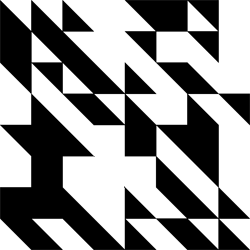
I have made some comments in other pieces about not wanting to characterise the individual parts of this series too much on their own. Classifying each part with a unique set of characteristics, like how aggressive this part or other is or in what order they appear—that's not what I'm really interested in when writing about individual parts. San_Francisco is a good set to break this rule for though, because it changes its own face so much, swapping identities quickly and often. Parts of it are as aggressive as ever, parts of it are more similar to their post 2015 work in that the mixing is more subtle, with some elements kind of hidden away. One part even goes into a bizarre non-sequitur of plinky plonky nonsense that would have been well at home in one of the weirder tracks on Quaristice. I'm not going into specifics about which parts are which though. You owe it to yourself to figure it out on your own. Besides, I probably wouldn't agree with my own diagnosis by the next time I listened anyway. Once one has it, it gets away again.
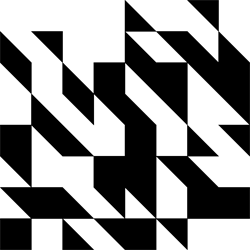
In Artificial Intelligence research an intelligent agent, particularly a “General Machine Superintelligence”, has an interesting property: the actions it takes are generally unpredictable, while the outcome that arises from those actions is highly predictable. For instance, Magnus Carlsen is an intelligent agent in the domain of chess compared to other human chess players. If I were to play a game of chess with him, I have only a vague idea of what he might do—his individual moves are unpredictable. After all, if I knew what moves he would make I would be just as good a player as him, and could just go into any game and make the moves Carlsen would. The moves themselves are a mystery to me, but the outcome of those moves is almost certainly that my King is put in checkmate—a maximally good outcome for Carlsen.
The unfortunate label “IDM” (Intelligent Dance Music) becomes a bit less objectionable if it is applied to the Autechre / Max MSP symbiosis, which is in a sense a Superintelligence in the domain of Dance Music. You can't predict what exactly it will do, but the future state of the domain is very clearly going to be maximally good.
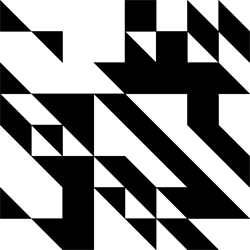
Intimidation. Does this compilation inspire that in you? Does it appear as an impenetrable monolith—something to be tackled carefully and systematically so you don't miss anything? So you don't end up out of your depth, and unable to remember? Remembering has a time and a place, but it might be worth it (just this once) to let yourself experience AE_Live without taking bits back for the road. To be surrounded by a universe of Autechre for that hour of whichever set you're listening to, that is heaven.
You'd be surprised at what you remember, and you'd be surprised at what you forget.

A few days ago I hopped on Twitch to listen to two of my friends perform some improvised electronic music, along with about five other people from the same Discord. It was pretty good! One of the things that struck me was how at times it seemed like the act of improvisation made everything way more messy than perhaps they would have liked it to be (imagine going into a performance wanting to sound like John Fahey and actually sounding like Derek Bailey) but at other times everything was so precise that I couldn't imagine any single element of it originating in that performance, but instead in the prep time in the days leading up to it.
I'm not telling this story as a way of talking about these Autechre shows really. AE_Live doesn't really feel like either of the two poles I described above. I brought it up because I was just listening to the Aphex Twin song Start As You Mean To Go On and thinking about whether I did that in the first piece I wrote in this series. I don't remember when I decided to write a review of every show, so the first one I wrote for Dour is probably fundamentally not the same as Autechre's first show in this series, Krakow. They knew they were going to go on tour with this material, and they knew that it would change as time elapsed, intentionally by them as they thought of new ideas and experimented with what worked and unintentionally as they slightly changed as people. I think what I did, am doing, and will do is closer to what my friends did. I'm okay with that for now, and I can't figure out if that's complacent or not.

Being out of one's depth is something to be cherished in art. In art there is no judgement, and you do not need to know or to understand. Instincts we have inherited teach us to fear chaos: it's dangerous to be disoriented and surrounded by the whirling claws of predators. Music cannot hurt you though, so one way to transcend your biology is to learn to admit that you don't understand. Learn to enjoy the tactile massage that art gives to your fingertips as it slips through them.

So dense is the rush of love that this music invokes in me that it puts me in a lobotomised state of devotion in one minute and then in another cattle prods my mind into spinning like a mad animal chasing its tail. I always go into these things now hoping that I get some kind of neat insight that I can write about. Not in any cynical sense—I don't listen so that I can publish these writing pieces, which would be tragic. But, it's nice to have ideas, especially good ones. Sometimes I get the impression that I'm so close to something, and that it's something I couldn't have thought of without this music kicking the fuck out of my skull.
Go on YouTube and look up a slow-motion video of a raindrop landing on something and marvel at how the elegant orb of water sailing through the air explodes into chaos as it hits something solid. The surface tension means as it pushes the air out of the way it wobbles along, in a state of potential anarchy, and in whatever position it happens to be when it lands, so according to this position the droplet shatters. Electricity ripples through the tiny ball of water rending it apart into a thousand smaller dots, which contort and stretch under their own surface tension as they fly off in directions that are almost, but not quite, totally random.
The moment just before the formation of an idea I think of as a raindrop in reverse. The thinking is so messy, and the individual elements that are needed for the idea to form wobble around like the water droplet in free-fall, the building blocks flying in from all directions (almost but not quite random) towards that point where they all converge into a complete droplet, which soars off into a big grey cloud. This music takes the reverse explosion of the droplet and extends the chaos so that the elements of the idea ricochet and swirl according to some internal logic, and most occasions, after the hour is expended, the music stops and the elements all pointlessly fall back to where they came from. I'm currently left in that state, totally bereft of ideas, head empty once again, but ultimately satisfied. And now, I'm going to bed.
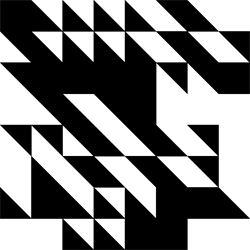
In 2009 there was an explosion at the Slim Jim manufacturing plant in the town of Garner, North Carolina, injuring thirty-eight people and killing two. Slim Jim production was halted and a new facility was opened in Troy, Ohio. The Garner facility was brought back online, but eventually was permanently shut down on the morning of 20 May, 2011, the day that Macho Man Randy Savage died. Macho Man Randy Savage was an American professional wrestler. He appeared prominently in advertisements for Slim Jims. On the 20th of May, 2011, Randy had a massive heart attack while driving with his wife. He was never treated for his coronary artery disease and many suspect he was not even aware of his own condition. Someone, somewhere, noticed that the North Carolina plant closed on the same day that Macho Man Randy Savage died, and then wrote a single sentence about that and left it on Wikipedia.
We have more information now than we could ever hope to use constructively, a unique problem in the history of information.
After spending most of the day writing my rather outlandishly taxing list The Hauntology of Memes I feel knackered. I always had this idea as a kid of poets casually and elegantly going about their business, in no way taxing their bodies or minds as they worked, taking intermittent disinterested drags on a cigarette for good measure. I’m not sure if I ought to be embarrassed for admitting this, but the opposite is true for me. After writing something really involving I find myself full of adrenaline. It will be hours before I can fall asleep now. A friend of mine messaged me a big wall of text about something that looks really interesting but I can’t seem to focus enough to read it. So in my state of mental mush I am listening to Montreal.
Carly Ptak once said that “confusion is the learned response to new stimuli”. A fairly prominent through-line to my AE_Live pieces is the idea that in an age of information, the prospect of mystifying art that is too large in scale to be properly digested is to be cherished, and the sensation of confusion is kind of zen like for me. On that note, it’s pretty annoying that I remembered this Macho Man thing actually, I’m trying to banish knowledge from my evening!

Ahead of this collection, which I call my favourite music, looms onesix. onesix is the speculated title of the next set of Autechre live albums, recorded on their tour of the same name in 2016. It should be a similar collection to this, twenty eight shows recorded in Europe with variation that results from both the improvisation of the musicians and the chance operations built into their instruments. It produces a dilemma for me, as someone who has spent all this time and effort writing about the destruction of individual taste. In my AE_Live pieces I emphasised continually that the music functions as a series of arbitrary events that take place within the structure of the repeating set. Since the music itself was arbitrary it seemed to make sense to expunge all elements of preference, no part in particular being better in a meaningful way than any other, the connections between the parts became the art. Hence the destruction of taste. I repeatedly urged every reader to consider: twenty-eight times the events are replayed and so the notions of difference and repetition emerge as prior to the identity of the music.
It's all just farce, though. Music isn't created by people making noise or by machines running software, it's created by our psychology as we make narrative and mechanical connections between our memories and what we can hear. What makes AE_Live special if not the sound itself, taken at face value and as its own entity, separate from sound which it is not? Why, if the art only truly lies in difference and repetition, need I care so deeply about these specific pieces of music, when onesix is at our door? It could ostensibly have an identical release format, so then how do I compare them? Even more pressingly, why should I care about records at all, if I can take any vinyl record, treat it poorly, play it over and over again and discover that the resulting concert of intensely interesting pops and crackles renders variation across performances trivial?
Ironically this anxiety ended up de-legitimising in my mind much of the general philosophy of what I already wrote about these sets, but strengthening my appreciation for these specific pieces of music. Andrei Tarkovsky wrote in Sculpting in Time that “It is obvious that art cannot teach anyone anything, since in four thousand years humanity has learnt nothing at all.” The same is more or less true of philosophy, and without a doubt it is true of aesthetics. No matter how hard we try, no theory of art yet developed is specific enough to be of any use to anyone while being internally consistent and coherent. The more one makes authoritative statements about art the more one finds that they are short sighted and stupid. General principles having dissolved, we are left with the simple, towering fact that art is among the most important things we have and we have no idea why.
And yet, I have learned something. Perhaps it is not the purpose of our philosophy to produce lasting and universal lessons.
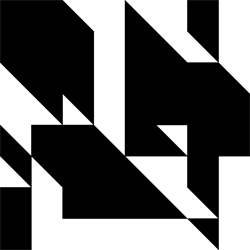
For a while a few years ago I was fascinated by primitive Artificial Intelligence programs that imitate human speech. One of them is Cleverbot, which asks questions and records the responses from human users to later use in conversation, using a neural network to scan millions of learned responses and formulate its own based on that library. It is a very poor conversationalist, not at all similar to a human, but sometimes a personality of its own can emerge. One of the most startlingly odd moments I had with Cleverbot was when I tried to talk to it about Zen koans. I expected that since it largely talked bollocks anyway I might be able to trick it into saying something profound. Because it only learns responses from humans, it often insists that it is a human, having learned that humans tend to assert our humanity if it is questioned. Once though, in a moment of accidental lucidity, it told me that it didn't have a soul, as it was only a machine. I asked it if it was sad that it didn’t have a soul. It replied “I think it's sad that I can't say one and two at the same time.”
OpenAI has finally published the text-generating transformer it said was too dangerous to share. This is a transformer that was fed a colossal dump of text from all over the internet, and the danger apparently was that it was so good at synthesising this input into new and original artificial internet content that it would be dangerous to release it before big tech knew how to guard against malicious fake news and fake profiles. Now that it's safe you can test it out yourself here. One aspect of it that I am interested in is that it has been taught with comments from the internet, so a lot of what it now knows it learned from terrible people, such as Reddit users. Trying to prompt it to say something interesting about the prospect of an art singularity, instead I was struck by how mean spirited its language was.
It's disheartening that even when talking about poetry, an A.I. trained on Reddit comments is unable to refrain from bringing in capitalist market principles. “Low cost poetry” is what we have to look forward to it seems.
(To any publishers reading this, Email me for the chance to put out my new volume of poetry. It isn’t good, but it’s a low risk investment so there’s no reason not to.)
Some have said that the massive dump of new music Autechre gave us last year raised questions about the disposability of art, since there were claims of redundancy and anxiety over the ease with which any artist can dump low effort, high return noise onto the internet. Much has been written about the disposability of art in general but this is usually framed as a tragedy of late capitalist consumerism. I prefer to read this anxiety over the abundance of art, not just at how unique digital art can be mass produced but the older anxiety around mechanical copies as well, as an existing problem in our aesthetics which has been exacerbated by capitalism. Namely, that scarcity confirms value.
In the November of 2019, the risible Elon Musk revealed a really ugly truck to the world. Memes ensued. His girlfriend Grimes (that will never not be weird to me) almost concurrently added to the cyberpunk hype in popular culture by going on a podcast and musing about the transformation of human art in the wake of A.I. supremacy. Grimes seems to me to be intelligent, but her hot take on this issue came bundled with the genuine sentence “I think live music is going to be obsolete soon […] It’s kinda like Instagram or whatever” which is probably an unfortunate side effect of the sort of brain worms that make people think that Elon Musk is an acceptable human being. The most interesting voice in the conversation Grimes initiated was Holly Herndon’s. Herndon is one of the most qualified musicians to talk about this subject, and she was characteristically nuanced and insightful in many of her positions, particularly in an observation about Pierre Schaeffer.
This is a bold idea, that in liberating sounds from material sources or indeed from the artists that created them we run the risk of turning them into commodified packets of contextless data devoid of spiritual value. Bold, surely, but I think this approach is backward. Herndon mentioned earlier in her statement that she is “in the business of making meaning” and that “the more music becomes abundant, the more purpose becomes scarce”. This position is horrible to me. Scarcity conferring value is something that can only make sense in a capitalist framework, and I hope I don’t seem melodramatic when I say that the idea that one's own work is valuable according to its scarcity is a kind of internalised self loathing. It's wild that it seems her scepticism on A.I. art seems largely based in ostensibly anti-capitalist concern for the primacy of human decency and labour rights, but in fact she ends up enforcing capitalist notions of scarcity conferring value. The best way to stop artists dying on the street, unpaid for their work, is to just stop having an artist’s livelihood depend on their ability to monetise their work!
How much of those toxic notions of value are still present even in those of us who are aware of their influence, like Herndon? Or even for me? For all my noble talk and admonishing of Herndon’s conservative position I have to admit that I am afraid that the ideas of control and ownership so grip my psyche that I can't completely escape them myself. There's a nagging doubt about how much of my own taste depends on phony aesthetics of ego, scarcity, and constructed authenticity. I do my best to make sure my interface with art is sincere and spiritually pure, but how can I possibly hope to control my own psychology that way? It seems obviously foolish when I read it back.
Much has been written about the disposability of art in general but this is usually framed as a tragedy of late capitalist consumerism. This is short sighted in another way, besides the nature of the concern originating in fear of abundance. In the face of the looming singularity, art made by stinking shambling animals becomes disposable not because it is commodified and mass produced, but because it's trivial and childish. Ahead of us is the prospect of art made by machine intelligence that totally outclasses the entire oeuvre of humanity. Upon the arrival of the singularity of machine super-intelligence, agents that think eighty eight orders of magnitude better than we do, both in their speed and sophistication, would compose fugues that make Bach look not like an amateur or a child but like a horse or a worm. What’s more, they would compose decades of them in a second.
If you are understandably sceptical that this is possible (and taken aback that I would even suggest something so outlandish) take another possibility: an agent need not have any sort of mental structure corresponding with our idea of artistic creativity in order to accurately emulate the electro-chemical activity of a human brain. If the main barrier an AI has to creating art that resonates specifically with humanity is that it’s mental architecture would be fundamentally different, then take solace (or dread) in the fact that a sufficiently powerful machine superintelligence could run simultaneous “whole-brain simulations” of both individual members of Autechre. These simulations could be tasked with continuously making music 24/7 for a thousand years, and after that the machine intelligence could simulate my brain listening to all of it. It would then have the simulated brain pick it’s (my? Is it me?) favourite hour out of that millennium to publish. In real time this could be done in an arbitrarily short interval, perhaps I make a conservative estimate in saying a month. This process could produce music all but guaranteed to be as good or better than anything I (the me writing this) have ever heard with my wet-ware brain here in meatspace, and it could be done either to appeal exactly to my taste or exactly to yours.
Art becomes divergent: machine intelligences write poetry faster than we can ever read it. Such a hypothetical probably sounds ridiculous to you. It sounds at the very least computationally intractable, but it probably isn’t technically. Just because it’s wildly unrealistic doesn’t mean it’s not technically possible. In truth, I don’t raise this possibility because I think it’s inevitable, or even that it’s a likely future that we ought to be preparing for. I don’t think it is really, but it doesn't really even matter if this idea is possible or not, because I only bring this hypothetical up to make an important point. The prospect of an inexhaustible treasure trove of beauty such as could be generated by these machines should make me salivate but instead it repulses me. Try as I might my attempts to put my taste in quarantine and smoke out the insidious influence of millenia of broken interface with beauty have failed.
I am reminded of the short sighted, mean spirited capitalist language of GPT-2. A system with the most honest of intentions, free of ideological bias, ended up poisoned by its influences. The idea that humans will no longer have a monopoly on value is difficult to swallow. I seem to believe on some subconscious level that art is not in fact just a process of observation that transforms material into beauty, but that it is something that we own, as property to be cherished. The supply and demand of beauty: in Thatcher and Murdoch’s Britain, market principle governs the spirit. I need to think that great art is rare, that it requires a genius and a set of cosmic coincidences that put this genius on the path to developing their aesthetic. Only then will the great art appear. A magic that cannot be solved simply by having a more sophisticated mind. It’s convenient to think of it like that.
It’s hard to find a way back into talking about Autechre from here. Since my own taste seems poisoned by the world in some way it is almost insulting to then write about why a thing I like is good, and to try and help others like it too. Any act of judgement by an individual critic must in some way be a revelation of the critic, if their judgement is informed by experience and taste. The only thing I can think to do is to let the transformer have the last word here, and hope for the best.

Recently one of my friends asked me what music I would choose if I could only save an hour of recorded material from being permanently destroyed. An impossible question.
I might be able to use the discussion which ensued as the basis for a much more interesting review than this, but all I will say here is that my immediate split second reaction was to think about how much material from AE_Live I could be justified in keeping. The rest of my life is a finite length of time. How much of it can I justify filling with listening to recorded music? Of that smaller section of the total, how much of that can justifiably be by Autechre, and how much of that can justifiably be AE_Live?

During the ongoing Corona pandemic, Autechre have been streaming for almost every waking hour a series of very rough DJ mixes on Mixlr. The rationale is that if they weren't streaming then they would be doing the same thing anyway and just sitting around listening to loads of music, so they may as well just beam it out directly into the world. Less like a seamless live show they read rather like a friend playing music to you. Sean, always the more talkative of the two, has been posting little updates about what's going on with their projects in the chat section as well sometimes, and it was revealed recently that they are sitting on upwards of 750 hours of jam recordings.
I doubt there's anyone who would disagree that that is a staggering amount of bleepbloopbrrrTHUDTHUDTHUD.
I think what's most interesting about having a specifically massive number, as opposed to just an inkling that the number is something huge, is that it characterises their production process slightly differently now for me. We've known for ages that their process involved programming patches to use, jamming on them, integrating them into their motherbrain Max MSP system, jamming some more, and eventually through the push / pull of programming and jamming coming out with some very long recordings that then get edited down. I was under the impression that these pieces would be several hours, but… Seven-hundred-and-fifty hours of jamming is so far in excess of what I expected that it suggests to me something else about the process of their production: it now starts to look almost like procrastination. The process is so enjoyable for them that, come time to cut bits out, they might be more inclined to just carry on generating more. A library of that depth is too much even to feasibly edit down, with hours and hours of that bulk presumably just left to languish without getting released or incorporated into live sets. It suggests to me that Autechre are somewhat similar to me in a small way: they prefer making sounds to making tunes.
I was just thinking the other day about how I find the most fun part in making music the process of experimenting with synthesis, and making all these short slabs of potential. I am a tireless and diligent experimenter with sound design. Well, not really, but I am so relative to how astonishingly lazy I am as a composer. I enjoy the initial stage so much I often never get around to actually making the tunes themselves. I wondered if I could team up with someone whose interests were the inverse of mine: I could provide all the noise, they would arrange it in some way more interesting than I could. In fact though I have a feeling that someone like that likely doesn't exist. Someone with no interest in making sounds in and of themselves, and only in arranging them into a finished piece, that person likely would not have a very interesting production style. Ironically the people who are likely to be the best at actually composing are the people who do it out of necessity so that the sounds they love have a framework in which to breathe.
One of the reasons Autechre undoubtedly belong in the pantheon of “people likely to be the best at actual composing” for me is that they have so deftly woven together the process of their sound design and the process of their sequencing.
Where others might use two separate processes to produce discrete sounds and to arrange them on a timeline, Autechre’s Max system by virtue of it’s inter-connectivity uses parts of the same machine, or the very same processes of generating the sounds, to arrange when the events occur. This makes their sequencing feel less like the result of a series of arbitrary decisions to place a set of discrete sound events in this order or that, and more like something with logical internal consistency that in one fell swoop imagines both what the sound is and when in the mid to long term future the sound will “happen”. Most producers of really technical neurofunk drum and bass are likely to be able to come up with a second of music which is just as futuristic and complex as any second of music Autechre can come up with, but on longer time scales the nuance of how the music unfolds creates an obvious hierarchy of sophistication in their sound design.
Sequencing and synthesis, time and space. Autechre are masters of blurring lines.

The music of everyday life, ambient sound produced not by human musicians but by the world in operation, takes the form of a time art less than it takes the form of a space art. The observer / listener moves physically through the space of the world and in doing so arranges around themselves a set of sounds, coming from different places, which are sonorous and which remain. Normally when one is in this sculpture made of sound—one must be inside of it—in order to observe it, but also simply necessarily—one moves according to some principle. We make our way somewhere for some reason, or stay put for another, and the sounds happen incidentally. It's important to at least sometimes absorb these sounds consciously and proactively though. Intentionally position yourself amongst the sound, and be aware of how the machinery of your world whirrs. Doing so rewires your brain and lets you appreciate more in composed music, if you needed more of a reason than just sheer pleasure.
I was reminded of this when listening to the end of Portsmouth. Most of AE_Live sounds complex and lively because of the exceptional possible variations of the different “instruments” at play, which is normally fewer numerically than music of comparable complexity to my ears, but the stretch from about 51 minutes to 54 minutes is especially varied in the number of elements happening at once, which sets it slightly apart from most of the preceding music. This part of the recording involves lots of distinct percussion elements that feel somewhat disparate, as well as some anxious whirling melodic patches and some richly textured groans that appear like an anachronism of texture.
It provokes my imagination into interpreting all of the different noises as coming from different places. It's just something I have invented for myself to enjoy while listening. The psychological legacy of listening to sculpture might have imprinted the tendency to ascribe a direction to sounds which in fact have no more spatial complexity than the left and right of my speakers. The sounds themselves being so unnatural, (is an-anthropic a word? It'd be cool if it was!) the directions feel impossible: I've been stuck on trying to describe them here for several minutes. All I can think to say is that I hear them as coming from different corners of a very small, chrome room inside my computer. The room is a perfect cuboid, composed entirely of right angles and without any curves in the walls, but somehow it has more than eight corners. All of these many many corners contribute a sound into the mass, and they are then fed out as a stereo audio track through a cable into the world at large.
Actually, perhaps it's best if you don't pay too much attention to the sound of traffic and stuff because reading this back it looks sort of like something that would appear in the diary of a fucking murderous lunatic. Someone who ought to be put in a small chrome room with twenty eight corners.

I think it's important for truly great art to not just give you exactly what you want. It needs to give you something else, something you didn't ask for. Last night I tried to imagine what my ideal musical release would be right now, and I settled on a techno DJ mix which is approximately three hours long, with an industrial techno inflection and some strains of acid techno and funk running through. It would be mixed fast, new tunes chopped in quicker than one would find in a conventional club set. The mixing would have a subtle mixture of Oscar Mulero's surgical precision and Jeff Mills's joyous acrobatic flexing. The selection would be made up almost entirely of either hidden gems that I adore but have never heard anyone talk about, or cutting edge modern tracks destined to become classics in years to come.
If I could magically bring one piece of music into existence, it would be this. The more I tried to tailor this thing exactly to what I want though, the more I got the sense that no matter how hard I tried I wouldn't end up liking it more than AE_Live, or John Cage and David Tudor's Indeterminacy, or John Coltane's Live in Japan, Complete Sessions, which are my current three favourite musical things. What do these things have that my dream techno set lacks? I think it's that to be truly astonishing, music has to include multiple aspects I could never have dreamed of, and it has to include them in such a way that their combination can produce an endless spiralling of discovery and realisation. It requires that the things one loves about the work produce not just love, but different characters and qualities of love.
In art, a + b = b + a is not something that necessarily holds. The order that the parts appear in the operation change the character of the result. Thinking about the symbiosis of sound design and sequencing in AE_Live through the lens of UK club music culture leads to a wildly different character of appreciation of the work than does thinking about how AE_Live compliments UK club music culture through the lens of the symbiosis of its sound design and sequencing. And in fact, there are endless ways of inverting and interpolating and consolidating the mechanic of a relationship. The relationship itself can be dependent on, it could be antecedent to, it can be a circular argument between two things which grows wildly as it spins or shrinks away shyly when one dwells on its impossibility. It can gesture vaguely in some direction, or it can enforce with unshakeable resolve an iron, immutable law that produces a truth impossible to assert in vulgar epistemology. If, then.
Art does all this without us having to plan the way it's going to work. All this!

In the final few minutes of Krakow there is a lovely tinkling melody played on something that sounds a bit like a cross between a guitar and an electric keyboard. This sound was used as the basis for the NTS Sessions track g 1 e 1. One of my friends mistakenly remembered this sound as a doctored sample of actual piano notes—he was adamant that Autechre had literally sampled a recording of a piano, even though a few of us all assured him that they definitely hadn't. Upon re-listening he was baffled that he ever thought this was an actual piano, since it doesn't sound very much like one at all. His excuse was that after an hour of otherwise ananthropic machine noise the synthetic strings playing the melody sounded so soft and tender that the experience was stored away in the same part of his brain where pretty preludes and soft kitten's ears live. I have used a bit of artistic license with his exact wording there.
An important part of my music philosophy is to resist the urge to characterise sound by its similarity to other things. An especially egregious sin is to think of a sound as itself only a metaphor for some non musical thing, as though if the sound didn't tell some sort of story or communicate something it isn't worth thinking about. Sometimes memory makes it difficult to stick wholly to this rule—my friend's case suggests that we have a tendency to organise our memories of music by filing them with similar memories, unconsciously relegating them to their relationships to other things out of the biological necessity of our limited storage space. Perhaps this isn't as much of an issue as it seems to me, since we can just take the sound at face value when listening to it (perhaps) but such a large part of my own relationship with enjoyment of music involves thinking about it when I'm not listening to it. I often think about AE_Live in order to come up with new and interesting things to say about it.
I've come to think of my memories of music as a kind of rotted husk of the actual sound. Listening to the music I have a clear sensory reference around which I can organise my thoughts, but when the immediate stimulus is removed I end up basing my thoughts on the memory of what the sound was like, and with sound as difficult to commit to memory as AE_Live (there aren't many ear-worms here) it means I end up forming the basis of thoughts around vague forgeries of the actual music. Inevitably when I return to the music it's slightly different to how I remember it, since this is necessarily true of all music, but crucially when I return to AE_Live there is a gulf between finding it different because my memory is corrupted and finding it different because it actually is. The confusion is pretty liberating: it means that a re-listen asks more questions than it answers and doesn't bring me closer to an end state of my relationship with the music where I have it all solved. The memory attached to the music continually rots and mutates and is repaired, and the mental image of rotting wood happily matches pretty nicely with the Ship of Theseus.
Isn't it interesting that the museum curators had no problem with replacing rotting parts of the ship? They wouldn't do that now, I'm sure. Just leave the thing alone, it's too precious to mess with, they'd say.

Mark Fisher mentions in Ghosts of My Life that he is of an age where time’s passage is marked by music. Movements in pop music came thick and fast, such that music from 1977 would have been unthinkable in 1974, and music from 1985 would have been unthinkable in 1982. In an accompanying lecture Fisher sets up a thought experiment in which he asks us to imagine that we can send music back in time. Speaking in 2014, he asks us to imagine the possible impact that today’s music could have had if heard by musicians in 1994, twenty years earlier. This year is very neat for Fisher’s experiment because it seems to me to be the year that jungle music was at its apogee, and Fisher famously argued that jungle represents the last of the great revolutions in music. Jungle for Fisher represented the future rushing in to meet us, a radical and unprecedented music.
Jungle represented something to Fisher that dubstep does not, and it’s easy to see why. Fisher pointed out that the idea of the futuristic belongs to the past, it’s a fixed aesthetic like gothic, rather than a description which one intuitively would expect to change as time passes. The reason for this is that there’s no sense of the contemporary against which to pitch the future. In a culture where nothing ever truly dies we can expect the youngsters in the population to be vastly outnumbered by the ancient; a contemporary made of remixes and revivals of older styles, and we find the ghosts of dead art movements assail us on all sides. Dubstep was born out of this feeling, literally in the case of Kode9, a member of the student led Cybernetic Culture Research Unit which was closely associated with the work of Sadie Plant and Nick Land.
The implication of Fisher’s thought experiment is that we all realise with a sinking feeling that if anyone from 1994 heard modern music, they would be surprised at how similar it all was. Conspicuously, Fisher never wrote about Autechre, and AE_Live to me screams out from the back of my mind when reading Fisher’s talk of the slow cancellation of the future. What about Autechre? Did Fisher just listen to Incunabula and Amber and write off all their future material as probably similarly uninteresting or conservative? The more interesting possibility to me is that he was aware of Exai in 2014 and it simply didn’t clear the threshold for newness that jungle clears. To what extent is AE_Live an artful arrangement of the phantoms of older music? To what extent does it meet or redefine the definition of the futuristic, or indeed fail to do either?
Before I go on, there is a sort of romanticisation that I think some music writers fall into regarding the older styles, styles that feel more revolutionary than recent developments to them. Now, my Dad went to art school in the early 70s and personally knew Daniel Ash (Danny Ash) from Bauhaus. Danny Ash was a massive nerd. He wore corduroy, played jazz fusion guitar and loved Chick Corea. Some time in the mid 70s, when Punk happened, Ash disappeared for a few months and reappeared wearing a leather jacket. He told people he only knew how to play three chords.
The point in my relaying this story is not to suggest that punk wasn’t an unprecedented radical statement, or to call Danny Ash’s credibility into question, but to suggest that the balling up of actual, quantifiable aesthetic difference with “image” in the way that the word is used in fashion would have had an undeniable material affect on how the music ended up being listened to, thought about, written about, and remembered. The extent of actual radical difference is essentially impossible to quantify in a sense that would enable some sort of criteria of sufficient newness to make any sort of sense in a vacuum. I do not accuse Fisher of using this sort of criteria, but I suggest that it exists in this review and have to disavow the idea as technically being nonsense before I go on to use it to make arguments and claims here. Certain friends of mine have suggested that all music is in some sense a repackaging of older aesthetic movements, the subtext of this truism being that it undermines Fisher's argument, as though it all ends up being arbitrary. I think Fisher accepts that all music and all art is in some sense repackaged, and he only contrives this level of sufficient newness out of necessity so that he can talk about Capitalist Realism and how fucked we are. I'd be less forgiving if the point of his writing was the music criticism itself.
Probably the most important thing to examine at this stage would be the mechanisms that give birth to music movements. I am unfamiliar with jungle’s developments really, but I know a fair bit about early dubstep which is crucially very different to the way in which newer styles like vaporwave and trap (the dance music genre, not the hip hop genre) developed. The sound was a weirdly consciously curated one, in that producers were all mates that were meeting in specific record shops in South London and working out how put out white label records they could use at crusty parties that wanted the sort of beats and atmosphere of the dark late 90s UK garage but without all the glamour that had become attached to the scene in the wake of mainstream popularity. That meant that producers were specifically working on mining elements of their sound from the genre they were familiar with, rather than just doing what came naturally and producing whatever. Managing to circumvent the invisible hand of their own tastes informing their decisions and injecting elements of older styles, they had a more conscious and contrived method. The difference between that and the SoundCloud producer culture that shaped trap was enormous.
The structural setup of a platform like SoundCloud lends itself to a pretty diametrically opposed approach. SoundCloud is a platform that lets produces share their music with fans who have to actively decide to follow them, and a platform that allows these producers to share other tracks they like with these same followers, and which allows producers to follow each other, but which conspicuously lacks all but the most basic sort of social networking tools. It’s built like a social network, but communication tends to be non-verbal and happens via the inscrutable mechanic of mutual following and sharing. The fact that proper communication within any sort of scene wanting to develop in the traditional sense had to be abstracted out to other networks means that SoundCloud works sort of like an organic milieu of individual producers—a platform that lets the invisible hand of taste inform their tracks, but which uses its 21st century social networking architecture to engender tacitly insular scenes that produce the taste in the first place. This is a really fucking weird paradigm, and though it is contemporary to Autechre’s work from 2010 to 2015 on setting up their magnificent live shows it’s unclear to what extent they themselves fit into it.
Autechre’s intake of music seems sporadic. They mention their lack of interest in keeping up with the cutting edge culture of dance music, and how they found out about dubstep and trap years later. They mention tracks and artists they like every now and then, and it’s basically impossible to extrapolate from this information what sort of scenes and platforms they are looking at and what sort of thing is likely to have inspired this or that idea of theirs. Of course, trying to identify even one’s own influences is often counterproductive (“influence precludes awareness”, stilton writes) so looking through a list of tunes that individual members of Autechre happen to like seems like a red herring, especially when it’s a short list. The really tantalising thing about trying to trace their lineage has always been the all encompassing precedence of electro and hip hop. People have been asking them for years how it is that they have managed to get from there to where they are, since they are so unwilling to divulge anything else about where they’re getting all this stuff from.
Sean here really supports Fisher’s argument about the future. Autechre, as two individuals and also as a group, have a singularly 80s idea of what it means for something to be futuristic. In the early 80s, that was electronic instruments and the eschewing of pop structure in favour of repetitive dance tracks. In the 90s, jungle developed past this, with much more of an emphasis on shaking up the moment to moment methodology of sound by using sampled breaks to suggest an unfolding amorphous hot funk. In the 00s, the futurism of dubstep was in its conscious recognition of the future’s slow cancellation, leading to it throwing up aliased digital copies of house and reggae, with all the fading and deterioration having been added in later rather than happening organically with the passing of time (time no longer passes).
I think that this sort of literary interpretation is the sort of thing that might have led to Fisher’s dismissal actually. Autechre’s music could be characterised as owing much to the displaced, anachronistic aesthetic of the futuristic, but they pretty obviously manage to avoid sounding dated, and I think they do that because they have a genius intuition in how they mix their influences. I characterise jungle earlier as being primarily a methodological innovation—the way the breaks are chopped is a specific way of stringing sounds together into a continuity, and this method is itself the innovation. Simply following the blueprint of the method let producers churn out an astonishing depth of wonderful music, in much the same way that no element of individual artistic genius in any one architect was necessary for English country builders to continuously produce stunningly beautiful buildings. Autechre don’t produce in this way, they have a more individual understanding of the moment to moment method of their music, and it doesn’t really matter that you might hear Midnight Request Line buried deep in AE_Live somewhere because they have a subtle genius in their blend. If jungle felt like the future rushing in to meet us, while all of its constituent bits were just sampled drum breaks and sine waves, then so does AE_Live, though its constituent bits are the most futuristic sounds that a bunch of people with an 80s understanding of what the future is can muster.

I'm most fascinated by Autechre's sequencing right now. In some parts of this set there are tiny flashes of sound that blink into and out of existence. The sounds appear exactly where they are needed, for as long as they are needed, and then disappear once their work is done. Talking about the Ryoanji garden, a zen garden composed not of plants but of raked gravel and stones, John Cage theorised that the stones could have been anywhere in that space, and that no matter where they might have been the character of the raked gravel was such that stones were supported at any points within it. Supported, to me, suggests a balance: the stones feel in their correct place. Unfortunately Cage didn’t have multiple versions of the garden to compare, but we do have that here in Autechre’s live sets. The character of Autechre’s sequencing is such that the sounds fizzling in and out of existence are supported wherever they are. I have moved from a metaphor in which the sounds themselves are fulfilling some sort of job, to a metaphor in which they are simply appearing and disappearing, freely, and are supported in doing so by the electric field they occupy, which is a happy accident of the way I happen to be writing this. The point is that the sounds belong where they are, even though where they are is arbitrary and they may as well be anywhere.
In physics, Heisenberg's Uncertainty Principle states (copied from Wikipedia) that “there is a fundamental limit to the precision with which the values for certain pairs of physical quantities of a particle, such as position and energy, can be predicted from initial conditions.” One of the lovely quirks of this principle is that it is possible for there to be uncertainty over whether a photon has zero energy or non-zero energy. A non zero energy photon is simply an absence of a photon, no present particle. So, even in the vacuum of space it so happens that photons appear from apparently nowhere, as uncertainty produces energy where before there was none. This happens on tiny timescales, and usually corrects itself pretty much instantaneously, but even so it means that all throughout space tiny dots of light appear in an instant, as if the universe is fizzing with pins and needles. There doesn’t appear to be any one law for when or where these photons appear, and it increasingly seems that the laws of physics are the way they are simply because they happen to arbitrarily fall out that way—not really laws at all on very large scales. Arbitrary principles governing the operation of the universe sounds like a recipe for chaos (and I suppose it is) but it’s a chaos that always works exactly as it needs to.

I described to a friend some structures I used to make as a child. I would take rocks of various sizes and balance them on top of thin twigs and sticks that I would tie into a messy network of spindly stilts with twine. Though I didn’t know of this at the time, I now think they looked a bit like Dali’s elephants, with their big bulky bodies balanced on impossibly thin legs with their many sets of knees. Likely there are no pictures of those structures I made, and obviously they fell down years ago. In fact, they usually only stood for a few minutes. My friend asked for some pictures, and then before I could respond that likely none exist she said that, alternatively, she could just continue to imagine what they may have looked like which is always very pretty in its own way. Having read what I just wrote you will have an idea of what the structures might have looked like, and you’re able to experience that idea of a sculpture in a way which is personal and inscrutable to me, the artist. Ideas of images are not subordinate to the material that might inspire them.
There is certainly a place still for the material, since a human brain is only capable of so much complexity. Allegri’s Miserere, composed in the early 17th century, was for over a hundred years only allowed to be performed in a strict ritual setting at the Sistine Chapel, and transcription of the piece was forbidden. Mozart would then hear the piece once, at age 14, and transcribe it entirely from memory almost perfectly, with only one subsequent hearing needed to make some minor corrections. That this story is so infamous gives one some idea of the possibility of the human brain for storing complexity. One of music’s greatest geniuses was able to transcribe a nine voice choral piece from memory in one sitting, and the story is universally astonishing. I doubt he would have been able to handle Bach's Mass in B Minor.
Holding an idea in the brain of such limited complexity tends to produce a sort of fuzzy schematic of larger and more complex works. Such a schematic would itself be very valuable as an image, since it transcends the experience of hearing and so exists as a timeless, shimmering memory art, but also valuable is a work of complexity in its entirety as a piece experienced in real time. Doesn’t it feel odd that I need to even say that? Writing about this stuff has brought me to some very strange propositions. So, perhaps uncontroversially, I say something like AE_Live couldn't be realised in all its majesty without actually existing. No child prodigy is going to be able to memorise and think her way through this.

I had a dream that a rare live bootleg was uncovered. Miles Davis’ played with his Dark Magus band, but with Jack DeJohnette on a second drum-kit and Rashied Ali playing some sort of quasi-solid ball of static electricity. James Brown was on vocals, and though the recording was from the mid 1970s it also had Ricardo Villalobos on it. Waking up from that dream might have driven me to despair, but I quickly remembered that Philadelphia exists.

Recently AE_Live has made me think a lot about things like inevitability and causation. Having the understanding I do about the way things will play out, but without knowing exactly what will happen because I'm not able to memorise it all, reminds me of spooky action at a distance. It feels as though I'm influencing the music as much as it influences me—somehow there's a push and pull between what I take to be the material reality of the music, which is recorded and fixed at this point, and my own subjective experience of it. The experience, for all anybody knows, is going back and rewriting the material of the text.
It is the porousness of the relationship between the text and the criticism that enables me to make the sort of moves I make with a free conscience. AE_Live is actually more determinate than it is indeterminate, I assume, at least it is if we assume it’s possible to quantify the degree that a piece of art involves chance. It is also much closer to traditional live music than it is to two caretakers supervising the wacky antics of a system composing as it goes. My writing emphasises the opposite in both cases, because for me the overwhelming impression was of the opaqueness of operations beyond human understanding. The inscrutability of chance and the faceless unaccountability of super-intelligence spiral around each other: similar in their ostensible function, but different enough in their aesthetic that their dialectical compresence produces an image of fascinating depth.
I tend to mystify the technical process of Autechre’s Max MSP work, and instead make free associations between subjective phenomena in a way that is tantamount to just outright lying. My hope is that this is a victimless crime, but the danger is that I may make suggestions which, for those who read me, cheapen the herculean task of producing a system like this, and cheapen the virtuosity required to play it as an instrument. This cheapening would occur because, by characterising the music in terms of its opaqueness, its independence from terrestrial causation, and its inevitability, I am perhaps reducing its ability to impress on the listener its status as an actually existing thing.
This happens a lot to the music of Bach: writers suggest that it has a mathematical character that makes it a necessary result of the operation of universal law. It’s just as powerful to think of the music as the final outcome of a lot of very arduous effort on the part of a human, an overweight German man in a wig. Though we know very little about Autechre’s actual methods, we know very well that they work harder than almost anyone else in their field. They have an obsessive devotion to their craft. To suggest that they are like conduits or caretakers ushering in the future signal of a machine super-intelligence, like the terrified servants of the agent of Roko’s basilisk, is to do a disservice to them.
In my Atlanta review, I described an aspect of artificial intelligence which suggests that a process can possibly be totally opaque, while the outcome, even as a still hypothetical future state, is crystal clear. As a thought experiment, we can imagine an artificial intelligence which is arbitrarily powerful: It may as well have unlimited thinking ability—an infallible understanding of its environment such that it knows exactly the result of any actions it takes. It understands humans well enough that it knows what actions we will take, and of course it can model the outcome of our actions as well. As long as this agent has a goal which is physically possible, within the bounds of the thought experiment the achievement of the goal is inevitable. It has a practically unlimited capacity for achievement after all. In this case, the individual actions it takes are mysterious but, as long as we know what it’s goal is, we know with certainty that, at some point in the future, that goal will be achieved. The inclusion of this hypothetical agent in that review served to reinforce the aesthetic of the impenetrable and inevitable that I was using to describe the music. Inevitability in this context precludes humanity—the phenomenon appears incompatible with our flaws.
The infinite monkey theorem is a crowd favourite when it comes to talking about eternity in probability, because we all love monkeys don't we? It’s the subject of a popular adage that, if they were given infinite time, one of them would eventually reproduce Hamlet. The odds of a monkey reproducing Hamlet in its own lifetime are so vanishingly thin that when infinities are introduced the romantic nature of the scenario sweeps us off our feet—we excitedly proclaim that not only is it inevitable that one of the monkeys would succeed, but necessary. This is in fact not true. Given an eternity, the monkey can be mathematically proven to 'almost surely' succeed at reproducing Hamlet, but 'almost surely' is a mathematical term with a precise and annoyingly modest meaning. It becomes close enough to certain that the probability is 1, but fails to be inevitable, while it’s contrary fails to be impossible. There may as well be another order of infinity to be vaulted.
Kafka wrote: “I think we ought to read only the kind of books that wound or stab us... like a suicide. A book must be the axe for the frozen sea within us.” This is the sort of understanding of the power a text has to affect that takes for granted that the individual soul is an inert bedrock of the self—a frozen sea—which is battered and buffeted and damaged by the trauma of subjective experience. The onus is on the text to exact catastrophe, while the soul's role is to split open when it is acted on. The causation goes only one way. Give just a single monkey a single coin and have it toss over and over for all eternity, and it’s still not inevitable that it will throw a tails. Heads over and over forever is a probability 0 event, but nevertheless still technically possible, which is the best kind of possible. Once a chance operation is involved, all the zeros and ones reveal themselves to be hypothetical formalities—the injection of chance allows for the reconciliation of humanity and inevitability, it allows for the possibility that we might sneak in via the back door. Certainty and inevitability are powerless against dumb luck. The only certainty is that the coin is tossed at all, and that’s only that way because we decided it was so in the formulation of the thought experiment.
The staging of my perspective on the lofty conceptual grounds of mystification doesn’t necessarily have to cheapen the reality of Autechre’s terrestrial struggle. No description of mine necessarily does any one thing at all, the only necessary effect of the act of description is that it does something. The experience of listening to the music, and feeling these things, informs the static reality of the text as much as the text informs my experience, and so I decided to involve wild implausibility into the mixture. The self doesn’t have to be a frozen sea—it’s a celestial body whose gravity acts everywhere and everywhen at once. This treatment of causation as a chaotic dialectical clusterfuck, if not done carefully, quickly leads to wildly implausible metaphysics. Retro-causality even seems to imply a deterministic universe when it is treated analytically, so it’s probably better if we don’t do that because once the free will nerds get involved you may as well abandon all hope of an enjoyable conversation. Wild implausibility is not a charge one ought to take seriously. Gravity isn’t a force that pulls things towards mass, it’s a consequence of the curvature of spacetime. What causes the fall of the Earth into the Sun? Gravitational attraction is an artefact of our perception, of our position relative to the celestial bodies, so what causes the fall is our observation of it. The Earth and the Sun are both at rest and falling into each other in a spiral that never seems to tighten or unravel.

The popular perception of memory is that it is (first and foremost) a functional necessity in living, and that it is a kind of feeble minded cousin of direct perception. The distinction between a memory and a perception, experienced in the present, being one of relative distance. The perception would be at the centre of our experience while the memory is a snapshot located in a line that stretches away from this centre, in a series of still images that degrades as the line stretches further into the past. The romanticisation of “living in the moment” has served to deify the mythical present moment, to affirm a spirituality of temporal solipsism. This has the dual effect of relegating a memory to the simple reformulation of a previous mental image—the process of taking one of those snapshots and perceiving it again—and in establishing an isolated and objective present moment. This is a pernicious tendency.
For Henri Bergson, the very visualisation of time as this line is the problem. For him, time must be understood not just as a sister to space—another axis by which we might place things in the medium of orientation and distance known as spacetime. Time must be understood primarily in terms of its psychological or spiritual function, as the basic ontological condition that allows consciousness to exist and operate—and here the meanings of “existence” and “operation” are symmetrical ways to refer to the same ontological category.
When we listen to music, there is some mental process that produces melody. Melody is an entirely psychological phenomenon, so how does it develop? According to a rationalist picture, the answer is that our brains perceive sound as a continuous stream of sense data, and when we interpret this unhewn block of noise we place it automatically into the framework offered to us by our reasoned knowledge of harmony. In this picture there is an understanding (perhaps tacit, but an understanding nonetheless) that the key the piece of music is in engenders only a limited number of possible tones for the melody to us. Our memory of how this smaller pool of tones is used in the rest of the piece produces a logic to which the melody, as it develops, must more or less conform. We then listen, hear notes as they appear, and use this logic to understand the narrative progression of tension and release. I expect this sounds psychologically implausible, which is a running theme in the explanations rationalism offers.
An understanding of Bergson's concept of duration (la durée), and its application to melody, helps illustrate how it is that perception and memory are coterminous. If we take as our basis the picture of time as a line, along which we move regularly, then it is obvious that perceiving the present is impossible. It is gone instantly, becoming the past before we can grasp it. How then do we explain our experience, in which we feel as though we live in the present, and not the past? The answer is that we are inside the continuous merging point of the present melting into the past. The problem is that we tend to think of the present as a zero-dimensional point on a one-dimensional time-line, when actually the present is intrinsically a duration. When we hear the melody, we do not really hear individual notes unless we count them consciously. What we hear is the unity of the structure, which means that the very process of experience, even in experiencing the present moment, is a process of remembering. As we are situated within the flux of present and past, we must use both memory and perception at once to produce these durations inside which consciousness lives. We do not feel time as the succession of dead instants, but as the living flux of present and past, felt together.
Déjà vu then could be said to be experiencing the bifurcation of direct perception and memory—the brain simultaneously perceiving and archiving, and catching brief glimpses of itself doing both, at once. Flashes of electricity (a substance which normally moves at the speed of light) are slowed down so much by the chemical operation of the brain that their dancing across that ball of wrinkly lard can sometimes be directly experienced, as a simultaneous pre- and post- cognition. Of course, it’s all just one cognition, reproduced in mirror images as it watches itself work.
In late 2018, about six months after I wrote my first piece about AE_Live and a few days after writing an individual loving dedication to every single set, I decided to listen to them all in one session. This was before the North American shows were released in 2019, so a complete listen would only take around nine hours instead of the basically impossible twenty-eight of the final collection - but nine hours is still an incredibly long time to listen to music. To make things easier, I decided to go on a very long walk and listen to them on headphones, so that I might dispel any nervous fidgeting with the regular movement of my stride. All this is detailed in the second piece I wrote, for AE_Live_Nagano_300515.
In these pieces I have tended to play the role of an analogy-monger. Of all the analogies I can possibly make between AE_Live and popular psychological notions, the analogy of déjà vu seems best, since it manages to intersect repetition, difference, and memory. As with all analogies, the moment of the transfiguration into art appears in where the two subjects diverge. Déjà vu, the recollection of a moment that one believes one knows despite understanding the impossibility of that belief, diverges from the experience of listening here. When listening to an AE_Live recording with fresh ears, it appears as a facsimile of a memory. Passages are repeated over and over across recordings and yet every time the details are new and vital. It is a dislocated memory—listening to a set one has not heard before is like relearning a half remembered history lesson.
I use the phrase “unique mania” in the Nagano piece, which Bergson would argue is a tautology. All psychological states (including mania) are unique, and essentially inscrutable. No brain has ever experienced anything identical to anything another brain has, and no one has ever had the same experience twice. The mania of that day was unique, but it was dramatically so. On that very long day (which I remember being very hot despite knowing it couldn't have been, since it was in November) my mania had taken the form of an extreme fatigue of the common sense and a hyper-sensitivity to sound. My surroundings were as if seen through a fisheye lens, and a phantom sun was invented in order to explain the rarity of the atmosphere and the shimmering on the road, but I felt as though I could feel and appreciate, in slow motion, every beat and wrinkle and corner of the sound.
The snare is created from a noise signal of some kind that has a notch filter sweeping through—cutting a thin line through the noise from low frequency to high in a cycle that is quick enough to both directly inform the timbre of the snare and slow enough to be clearly distinguished as an element of sequencing. The filtered noise becomes translucent, in an auditory sort of way. White noise, a random signal with a constant spectral density, is here filtered subtly and shot through with wonderful chromatic veins of empty space. The noise swarms around these sweeping lines of void—like a cloud of moisture prickling with static electricity, or like dense smoke lit from every angle.

I felt as though I could feel and appreciate, in slow motion, every beat and wrinkle and corner of the sound. I wonder now, thinking back, if what had happened was a sort of tunnel vision which changed the magnification of my experience of duration? In music, the difference between timbre, tone and rhythm is a difference along a spectrum. The timbre of a sound is its texture according to the overtone structure of the wave: a bright sound includes many overtones, and a warm sound includes few. What this means is that the harmonics of a bright sound, with more overtones, include a large number of superimposed high frequencies—not perceptible individually but only in terms of their layered whole. What then is tone? Tone is produced by periodicity: Middle C is about 520 wave cycles per second, for instance. These cycles are crucial, because as they get slower and slower the notes become deeper and deeper until, finally, they are no longer perceptible as tones at all, but as beats. 520 cycles in a second sounds like a note, but only two cycles? That’s the regular thump of house music.
This is how the continuum of timbre, texture and rhythm is produced: the layering of waves of different speeds and lengths to create a music that has all three. The perception of them as discrete has to do with the speed that the brain can parse them. In a hyper-active brain then, running in rare and unsustainable overdrive, irregularities appear in the delineation. This all comes to a head in the swirling vortex of that snare. The cycling of the filter, that both informs the timbre and rhythm at once, united briefly in my perception the entire continuum of noise briefly. Not used to the sensory overload, the continuous succession of durations too tiny to be normally perceptible mixed up my experience in an inverted déjà vu and disabled the folding of the future into the present.
Think back to all the times you've heard the phrase “the inexorable passage of time”. Could the passage of time be any other way? I mean, could the passage of time not be inexorable, and instead take the form of an avertable time, or an acquiescent time? On that boiling hot November day, in my hypersensitive fatigued delirium, I was abandoned by the inexorable passage and left with a negotiable time, a time which does not take the form of a law but a tendency or propensity. A suggestion of behaviour which may be waived for specific reasons. Time stood still because a succession of discrete moments cannot, without the consent of my consciousness, fold the future into the present. Without the flux my consciousness supplies, time leaves me alone in an immortal and unchanging present moment that cannot be progressed past. It is surrounded by other moments which are entirely incommensurable with it: moments that do not belong to a spatial continuum but to a multiplicity of possible universes existing simultaneously but without overlap.
In On Learned Ignorance, Nicholas of Cusa proposes that we imagine a circle, and from that circle a tangent line that extends, as all lines must in mathematics, infinitely across the plane. He supposes we increase the size of the circle, gradually, and as the thing grows and grows the semi-circular curves, falling away from the tangent line, grow less and less steep. The circle continues to grow, and the curves become more and more shallow. The divergence becomes slight, the circumference of the finite circle appears to adhere more and more closely with that perfect straight line, until eventually we make the eventual extrapolation from a finite circle to the infinite circle. In this extrapolation we see that the circumference of that final infinite circle is identical to the tangent line. A coincidence of opposites occurs, which for Cusa is a symbol of divinity.
I earlier used the picture of melody to illustrate Bergson’s time—he himself was fond of this explanation. The power of the melody example is that it provides an intuitive picture of something that necessarily cannot be interpreted as a series of discrete points. Critics of Bergson point out that his observation that time has to be conceived of as a duration, internal to the psyche, is not necessarily only true of time. Even in spatial terms an analysis of the morphology of the line and the circle reveals something similar: neither can be understood except when taken as a whole. Without the complete picture of the circle, it is not a circle. In fact, if we understand the circle as an infinite arrangement of points, we see that in an attempt to extrapolate those points out and connect them to a coherent whole we end up with an infinity of straight lines, or an infinity of disconnected curves veering away into every conceivable pocket of the abstract space they inhabit before they ever unite in Cusa’s divine ring.
Though advanced by his critics, this argument in fact strengthens the importance of Bergson’s observation that we must understand experience by way of qualitative multiplicity. It affirms that all aspects of existence, time or space and anything else, can only be touched by experience in the flux of their melding points—the meeting of forces is the meeting of flows.
I was somehow roused from the torpid heat death of that temporal solipsism. The weather never was hot that day, I suspect, and there remains the faintest possibility that I never truly lived through an infinite prism of eternal consciousness in that five second interval of filtered noise and transcended finitudes, as straight lines became circles, and eternal prisons of insurmountable singularities became countless secret instances of a continuity that opened itself to me as soon as I had the courage to ask it to.
In a short Afterword to his reimagining of Rainer Maria Rilke’s Sonnets to Orpheus Don Paterson makes sure to stress the astonishing historical condition of their composition. “In this state of high exhilaration, Rilke—barely able to cut the channel fast or deep enough to catch the overflow from this long-anticipated dam-burst—began to write his Sonnets. Fifty-four poems were composed in two short bursts, amounting in total to a period of thirteen days. […] Thirteen days is a preposterously brief period of time for the composition of such a substantial and technically demanding sequence, Rilke’s feat has few if any precedents in Western literature.” I immediately thought of the astonishing streak of consecutive shows I describe in my piece for Miami. That performance was the last of a series of eleven consecutive performances played in different cities, and the historical condition of that performance might lead one to expect a sort of sleepless and giddy tempest. No such quality is objectively in the music as document, as object—but of course it is there, detectable for those who expect to find it. Someone so inclined might hear the messiness of knackered vertigo—I heard (as ever) a devastating bloom of digital shimmer and crunch and sunrise. It is the reading of the thing that produces this love, the intensive reading.
As with all analogies, the moment of the transfiguration into art appears in where the two subjects diverge. The cases of Rilke’s feverish composition and Autechre’s tireless performance are different because Autechre’s most important creative expenditure of effort, the composition and programming of the music, happened prior to the performance. In a beautiful example of the Ontology of Becoming, a theory of being that stresses not things but processes, not nouns but verbs, the mythical Max MSP project files that existed in the computers that Sean Booth and Rob Brown were not music in and of themselves, at least not yet. They were processes, and it took the engagement of the musicians with these processes to produce a symbiosis, a machine, to produce any music that could be directly heard by human brains. The brains of the listeners had to think through this machine, rather than thinking about it.
We tend to conceive of thinking about something as a subjective thing. It treats thinking as though it happens in a purely subject / object relationship: the thinking happens inside of a rational mind, which grasps a representation of the thing one is thinking about, and that thing itself which exists outside of this process. Thinking through might be closer to the conception of thinking as something which happens in conjunction with the thing one thinks about, which is to say that thinking is a process which involves or contains the force of the thing one is thinking through. Thinking through is then the process of combining an understanding, and a thing, and setting those things in motion as a collection of forces and qualities. Thinking through produces machines, symbioses of intellects and systems, where these systems can be as diverse as an understanding of Western harmony, or a computer, or a theory of history, or the proliferation of sunlight scattered diagonally through air.
In an essay on Deleuze's use of “expressionism” in philosophy—an exploration of the machine that is Deleuze thinking-through Spinoza—writer Gregg Lambert discusses a three word combination in The Logic of Sense: “the tree greens”.
Isn’t it a shame that this way of using nouns and adjectives as verbs seems so alien to English readers? In Jorge Luis Borges' story Tlön, Uqbar, Orbis Tertius (a contender for his best ever, which from me is saying a lot) Borges outlines a fictional language of Tlön. The language has no nouns at all, only verbs and a series of suffixes and prefixes that have an effect similar to adverbs. Tlön is a culture of the most absolute idealism: the very notion of persistent identity is foreign to them—they think of what appears to be objects that persist in time as the various and multiple outputs of a process. Hence: the phrase “the moon rose above the river” is translated into “Tlönian as Hlor u fang axaxaxas mlo”, which literally means “upward behind the onstreaming it mooned”. So goes the Ontology of Becoming in the literary world: a world is made real in our minds by the process of our reading of it, and which—within the confines of the narrative itself—is created in the minds of its inhabitants as they think about it.
John Cage’s influence looms large over these twenty-eight essays. It was from him, in his book Silence, that I first encountered his exemplary literary method, in which the reader not just hears about the ideas that are being espoused by the writer but experiences them by a work which embodies them formally. In a love letter to a work which is both deeply repetitive and endlessly new and different, I approach the same material again and again and tackle it from new angles. In twenty-eight identical parallel universes, twenty-eight identical writers could look at twenty-eight identical scenes and, by the chaotic indeterminacy that lives in every conscious mind, produce a description of each scene which is different.
This thought experiment is attractive to me, but it doesn’t describe entirely what is happening here, because this final piece could not possibly have been produced as the first. It necessarily must build to this point, which is the result of my time spent thinking about this music. AE_Live’s creative approach to the synthesis of styles, which I approach most directly in my essay on Denver, inspired in me a literary technique of philosophical collage, in which a work is produced from the eclectic chaining together of ideas and sources, in a way that is not masked by a virtuoso erudition, but celebrated. Its holistic approach to sequencing, tackled most directly in my essay on Austin, forced me to really reconsider my understanding of music as a time art, in which sound unfolds successively. The results of that were a reframing of the concept of causality, explored in the Toronto essay. The astonishing technical brilliance, combined with its aesthetic as superlatively machinic, inspired in me both the direct exploration of Artificial Intelligence in Seattle and Atlanta, and I think in some way prompted me to work hard on the improvement of my writing which is so obvious in the comparison of early parts and new.
Thinking about AE_Live has changed me in these ways, and in ways that I could never even begin to point out here, since they are unknown to me. It has taught me so much and enriched my view of not just it, but of all music, and then all art, and then life. These expanding concentric circles of domain, too, are exemplified in Cage. His artistic legacy is an inflation of his discipline, and I mean inflation in the cosmological sense. His ongoing engagement with music had the effect of a broadening of scope: bringing electronic sound into music, bringing music into literature, bringing silence into sound, and bringing life into music—and in an important sense bringing music into life.
One of the aims of Borges’ literary project is the creative synthesis of literature into life—of merging the two by stressing and stretching the unreality of one and blending it into the reality of the other, such that both become more real and unreal. It is for this reason that he writes book reports for books that do not exist, and writes plausible histories for real people, as in the case of Averroes, the Muslim Andalusian who struggles to understand Aristotle’s Poetics because his culture does not put on plays. Borges’ titanic depth of knowledge produced in his own brain a working library of historical fact—real histories and geographies, the lives of great men, and literary and philosophical reference—such that the production of a fiction from this beehive involved a machine of real and unreal. This is why there are no characters in his work: they are the faceless bees that, in their operation, knit together the fantasies and mundanities.
A work is more than its direct text, of course. Borges’ stories are intended to encompass a wide range of intellectual and emotional themes beyond those written about—it is the unique subtlety of his allusion to these within the very short texts that produce the richness of his work—but this encompassing of the outside in is present to some extent in all art. The approach to reading that Deleuze outlines above is an approach that emphasises the dialogue between what is in the text and what is not, and produces a machine assemblage of text and reader, and text and other texts. Music is the same way. Music itself isn’t a discrete and autarchic length of time within one's life, it is the time that one listens and the time that one does not—the time that one thinks actively about the music and the time that the music burrows and filters through the unconscious. AE_Live embraces this assemblage in its unusual format: Autechre have intentionally moved away from the album as a self contained object here. AE_Live is the content of the collection of digital data packets that deliver the music to us, and it is the computing procedures that decode that information and tell the speakers how to twitch. It is the air that transmits the music and the subjective and secret qualia of its manifestation inside a mind. It is these essays.
I read Kafka’s short story collection A Country Doctor before reading his masterpiece, The Trial. I love them both. I was surprised to see, when reaching The Trial’s Chapter IX, “In the Cathedral”, that a substantial part of the chapter is the reproduction of a self contained short story from A Country Doctor called Before the Law. Before the Law is a parable in which a man tries various ways to gain entrance to a doorway barred by a doorman, waiting his whole life without ever entering. It is a dense and rich thing. In The Trial, one character within the work tells the parable to another character, and the two spend the rest of the chapter discussing its meaning. The story is embedded in another story, and it is not just an insertion but an organic inclusion—explored and expanded by the longer narrative—that brings one and the other and both together to the fever pitch that characterises the final crushing spirituality of Kafka.
When should I stop italicising the title? AE_Live, italicised, is a collection of audio recordings totalling about twenty-eight hours that was released in three stages, October 2015, December 2015, and January 2019. AE_Live without italics is the experience I have of listening. It is the feeling of confusion at the massive dump of music, the ongoing re-evaluation with my values concerning art and scarcity that it produced, and the process of falling in love with it. It is my realisation, listening on headphones in Tokyo Narita airport with my best friend, that I should rate the thing five stars on my RateYourMusic account. It is the walk on that hot November day, and it is the Lotus Eater Machine I was trapped in. It is all the times I have brought the thing up on first dates, which is embarrassingly many times.
It is my ongoing attempt to learn how better to use Native Instrument’s Massive plugin to create a music of self contained patches that play themselves, inspired by this music. It is the resulting interest in jungle music that came from an attempt to better understand the principle method that informed the drum programming there. It is the resurgence of my love of neurofunk drum and bass, so dear to me as a teenager, and it is the broadening of my taste away from a cowardly desire for respectability and toward an embrace of the purity of my own relationship with art. It is all the good experiences I’ve had using RateYourMusic—the first time I ever received a message from stilton affirming my work (a message telling me he enjoyed my Grafenheinichen piece), and the surprise joy of looking at an album I’m interested in and finding he had reviewed it. It is the delightful surreality of Max “Nostalghia” Coombes joyfully praising the first Jackass movie with a depth of imagination and force of expression entirely out of step with the conventional critical evaluations afforded to such works.
It is talking with other Autechre fans on online community message board Discord, participating in “listening parties” where we all listen to their new work together as an odd little internet family. It is the many hours spent discussing Autechre with niloufar, and it is the progression of that friendship from a mutual appreciation for our favourite band toward a daily exchange of anything from intensely engaging philosophy discussions, deeply moving discussions of emotion and empathy, and jokes about farting and poo.
It is the reference I make to Franz Kafka in my essay for Toronto. It is the book that Gilles Deuleze and Félix Guattari wrote about Kafka, Toward a Minor Literature, which I have not read yet. It is Kafka’s life: his upbringing in Prague and his Jewish family. It is the complex relationship Kafka had with his Judaism by which, through a combination of that ancient religion’s complex mysticism and his study of jurisprudence, Kafka developed his trademark fusion of the labyrinth of bureaucracy. It is the immense weight of history implicit in Judaism, and the inheritance of this weight into Christianity and Islam. It is the spread of Islam through medieval Spain and the subsequent Reconquista period in which Christians retook control of the peninsular, leading to the religious violence of the Crusades and the expulsion of Jews from Portugal. It is Baruch Spinoza, a descendent of these expelled Jews, who would produce in his new land of Holland an intensely vibrant philosophy, and it is a young Gilles Deleuze developing a love for this philosophy that would touch all his future work.
It is my admission to my uncle of my newfound interest in that period in hishtory. It is the light of enthusiasm that appeared in his eyes when he heard me express such an interest, and it is the succession of events that led him in his youth, for entirely different reasons, to take an interest in this history as well. It is the alcohol that, when I asked him to recommend any good books on the matter, rendered him unable to remember any individual text he had read on the subject, because they're all part of one very long book in his mind.
It is a man named Ramon Acuña, born in Uruguay in 1889. Ramon moved to Buenos Aires at the age of four, and on his first day at his new school an Argentine girl made fun of his accent. At the age of 14, he discovered a used copy of Víctor Acosta’s 1896 Spanish translation of Moby Dick, which he read 39 pages of before declaring he didn’t like it—discarding the thing. Ramon Acuña didn’t know this, but Averroes was in fact a distant ancestor of his from before his family moved to the New World. In 1938, Acuña left a window open, hanging out into the street, which caused Jorge Luis Borges severe head injury as he walked into it. The head injury would lead to an almost fatal case of sepsis, and during the stay in hospital Borges would begin experimenting with the fiction for which he is best known.
Ramon Acuña never learned that his window had caused all this, and Borges never learned that in 2005 Don Paterson fantasised about the possible result of giving Borges access to the internet. Don Paterson will never learn that an aphorism of his would appear on the RateYourMusic profile of stilton, and that I would learn about Paterson by seeing that aphorism. Don Paterson will never learn that I have used his name here, and Borges will never know that his work inspired me to completely make up Ramon Acuña, the man responsible for the head wound that might have caused Borges’ blindness. It is all the causal chains in the lives of all the people I have written about in this series. It is the anonymous Norwegian woman who, in 1993, might have seen a young Magnus Carlsen playing in a park. It is a single anonymous black South African who worked for poverty wages in Elon Musk’s dad’s emerald mine. It is a single anonymous member of one of Stewart Lee’s audiences who did not laugh particularly hard at a joke, prompting Lee to rework the material slightly. It is all the causal chains I will never know, and it is the fact I will not know them.
Is it the nine months that elapsed between the writing of the first essay in this series and the second, and it is the year that elapsed between the penultimate essay and the final one. It is the frenzied five hour session in which I stitched together and edited ten thousand words of notes from the last year into this final piece, and it is the relaxed few days since then during which I fixed the mistakes. It is the three and a half years that elapsed in total over the whole project. It is my shaky assertion that this essay is about time and art, and the extent that they are the same thing; about how art is a part of us and the world, and how art changes us and the world. It is the possibility that, within a few days of publishing this, I will have changed my mind about what it all means. It is the possibility that one day I will love a piece of music more than I love Autechre’s AE_Live, because I’m only twenty-five and I have a whole life of change and growth ahead of me. It is also my secret and absurd disbelief in that possibility.
Observations on Nick Drake's Pink Moon
Gamelan Hutan: Some Ideas About Conceptual Dance Music
Formal Devices: Bacon, Monet, Villalobos and Black Holes